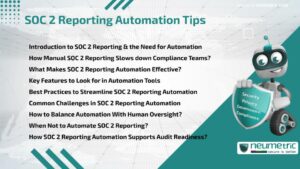Table of Contents
ToggleIntroduction
In the digital age, data has become an invaluable asset. Every swipe on a smartphone, every click on a website & every online transaction generates a trove of information that, in totality, forms an intricate web of digital footprints. As businesses and organizations increasingly shift operations online, the volume of personal digital data has skyrocketed. It’s not just about names and email addresses anymore. Today, data encompasses browsing habits, purchasing behaviors, geolocations, biometrics & so much more. In essence, our digital personas now reflect who we are just as much as our realworld interactions.
Yet, with this proliferation of digital data comes a myriad of challenges. How do we ensure that individuals’ data isn’t misused? What steps can be taken to prevent unauthorized access or leaks? More than ever, there’s a pressing need for robust legal frameworks that protect personal digital data. Such structures aim not just to shield individuals from potential misuse but also to instill confidence in digital interactions, assuring people that their digital selves are safeguarded.
Background of the Digital Personal Data Protection Act
The inception of the Digital Personal Data Protection Act didn’t occur in a vacuum. Historically, as technology evolved and the internet became ubiquitous, the initial euphoria of the World Wide Web gave way to growing concerns about data privacy. Reports of significant data breaches, where millions of users’ data were compromised, started making headlines. The misuse of personal data by corporations for profit, without explicit user consent, became a contentious issue.
Global incidents further fueled the fire. Highprofile cases, like the Cambridge Analytica scandal, brought data privacy discussions to dinner tables. It became evident that while technology had leaped bounds, regulations were lagging. There was a glaring gap between what technology could do with data and what it ethically should do.
Moreover, as international trade and collaborations expanded, there arose a need for standardization. Different countries began enacting their own data protection acts, each with its nuances. Organizations operating globally found themselves navigating a patchwork quilt of regulations. There was a clear necessity for a more unified approach, at least in terms of fundamental principles.
Objective and Purpose of the Digital Personal Data Protection Act
With the background established, the Digital Personal Data Protection Act was conceptualised with specific goals in mind.
Primary Goals: Protection of Individual Rights: At its core, the act seeks to uphold and protect the rights of individuals regarding their personal data. This encompasses not just the security of the data but also the control individuals have over it.
Standardisation: By setting clear guidelines and regulations, the act aims to provide a standardised framework that organisations can adhere to, ensuring consistency in data protection measures across the board.
Accountability and Transparency: One of the pivotal objectives is to hold organisations accountable for the data they collect and process. This involves ensuring transparency in how data is used and providing recourse in case of violations.
Alignment with International Standards: The Digital Personal Data Protection Act, while catering to specific regional or national needs, also recognizes the global nature of digital data. As such, it has been crafted keeping in mind international data protection standards, such as the General Data Protection Regulation (GDPR) of the European Union. This alignment ensures that businesses operating in multiple jurisdictions have a cohesive set of principles to adhere to, minimising conflicts and overlaps. It also signifies a global collaborative effort towards a digital future where data protection is paramount.
Core Provisions of the Act
The Digital Personal Data Protection Act isn’t just a paper tiger; it has been meticulously crafted, encompassing various provisions that set the bedrock for digital data protection. Let’s explore its key components.
Definition of Personal Data: In the digital realm, the term ‘personal data’ can be vast and multifaceted. Under the act, personal data refers to any information, whether stored electronically or in physical form, that can be used to directly or indirectly identify an individual. This could range from obvious identifiers like names and addresses to more nuanced data like IP addresses, browser cookies, or even behavioural patterns.
Consent Requirement: The act emphasises the sanctity of individual consent. Organisations are mandated to obtain clear, informed & explicit consent from individuals before collecting, processing, or sharing their data. This means gone are the days of ambiguous terms and conditions buried in fine print. Consent forms must be clear, concise & transparent about the data’s intended use.
Data Minimization Principle:Holding vast amounts of unnecessary data isn’t just ethically questionable; under the act, it’s discouraged. The data minimization principle mandates that organizations should only collect data pertinent to their specified purpose & no more. This not only reduces potential risks but also encourages efficient data management practices.
Rights of Data Subjects:
Right to Access: Individuals have the right to access their data held by organizations. This ensures transparency, allowing individuals to know what data is being stored and how it’s being used.
Right to Rectification: Mistakes happen. If an individual finds inaccurate or incomplete data about themselves stored by an organization, they have the right to request corrections.
Right to Erasure (‘Right to be Forgotten’): This provision allows individuals to request that their data be deleted from an organization’s records, especially if the data is no longer necessary for its initial purpose or if the individual revokes their consent.
Right to Data Portability: Individuals can request a copy of their data in a structured and commonlyused format, ensuring they can easily transfer their data from one service provider to another if they wish.
Data Protection Officer (DPO): To ensure adherence to the act, organizations, especially those dealing with vast amounts of personal data, are required to appoint a Data Protection Officer. The DPO acts as the torchbearer for data protection within the organization, ensuring compliance, addressing concerns & acting as a bridge between the organization and regulatory authorities.
Crossborder Data Transfer: In our globalized world, data often needs to flow across borders. However, this transfer isn’t unrestricted. The act sets forth rules ensuring that personal data isn’t compromised when transferred internationally. Organizations are required to ensure that the destination country or entity offers an equivalent level of data protection.
Enforcement and Penalties
For a law to be effective, robust enforcement mechanisms are pivotal. The act isn’t just a guideline; it has teeth.
Regulatory Authority:
A dedicated regulatory authority oversees the act’s implementation, ensuring that its tenets are adhered to. This body is not just a passive observer but has the power to conduct audits, investigations & impose sanctions when necessary.
Penalties for Noncompliance and Breaches:
Noncompliance with the act isn’t taken lightly. Organizations found in violation can face substantial penalties, which can be either a fixed amount or a percentage of their annual turnover, depending on the severity of the breach. This ensures that adhering to the act isn’t just a moral imperative but a financial one.
Mechanism for Reporting Violations:
Individual empowerment is a cornerstone of the act. If individuals feel that their data rights have been infringed upon, they can directly report violations to the regulatory authority. This provision ensures that organizations are held accountable not just by regulators but by the very people whose data they hold.
Impact on Businesses
As the world becomes increasingly digital, businesses find themselves in the unique position of both utilizing and being custodians of vast amounts of personal data. The Digital Personal Data Protection Act, while designed to protect individuals, also greatly impacts the business world. Here’s how:
Adapting Data Collection and Processing Methods:
With the introduction of the act, gone are the days where businesses could freely collect and use data without stringent guidelines. Now, every piece of personal data collected must have a clear purpose. This necessitates a more thoughtful and strategic approach to data collection and processing.
Businesses are now required to implement clear consent mechanisms, ensuring that data subjects are wellinformed. Moreover, with the data minimization principle in play, businesses need to be precise about the data they collect, ensuring it’s strictly relevant to their operations or the services they provide.
Benefits for Businesses:While the act may seem like a hurdle initially, in the long run, it presents multiple benefits for businesses:
Trust & Reputation: In an age where data breaches and privacy concerns frequently make headlines, adherence to the act positions a business as trustworthy. This can be a unique selling proposition, fostering loyalty among customers and clients.
Operational Efficiency: With the mandate to collect only pertinent data, businesses can streamline their data storage and processing methods, leading to more efficient operations and potentially reducing costs.
Legal Compliance & Risk Mitigation: Avoiding hefty penalties and potential litigation can save a business not just money but its reputation. Adhering to the act acts as a shield against potential legal pitfalls related to data misuse.
Case Study: XYZ Corp:
XYZ Corp, a multinational tech company, initially grappled with the provisions of the Digital Personal Data Protection Act. Their vast data repositories contained information collected over years, much of which lacked clear consent records. The company took proactive steps, implementing a comprehensive data audit to assess and clean their databases. They introduced a clear consent mechanism for their users and streamlined their data collection processes, ensuring alignment with the act’s principles. The result? Not only did XYZ Corp successfully adhere to the act, but they also witnessed a 20% increase in user trust, as measured by their annual surveys, establishing them as industry leaders in data protection.
Comparing with Other Global Data Protection Acts
The Digital Personal Data Protection Act, while a significant step towards data protection, isn’t the only legislation of its kind. Let’s delve into how it aligns or deviates from other major data protection laws globally.
General Data Protection Regulation (GDPR):
Originating in the European Union, GDPR has set the gold standard for data protection worldwide. Both GDPR and the Digital Personal Data Protection Act emphasize individual rights, including the right to access, rectification & erasure. However, while GDPR has a broader scope covering all EU residents, the Digital Personal Data Protection Act might be more regionspecific. The fines and penalties under GDPR can be up to 4% of a company’s global annual turnover & it remains to be seen if the Digital Personal Data Protection Act matches this level of punitive measures.
California Consumer Privacy Act (CCPA):
While GDPR focuses extensively on user consent, CCPA, originating in California, USA, emphasizes the right to opt out of data sales. The Digital Personal Data Protection Act, in its essence, seems to incorporate principles from both, ensuring both clear consent mechanisms and offering data subjects the power to dictate how their data is used, especially concerning third party transactions or data sales.
Criticisms and Concerns
Every piece of legislation, no matter how comprehensive, will inevitably face criticisms and concerns from various stakeholders. The Digital Personal Data Protection Act is no exception.
Common Critiques of the Act:
Vague Definitions: Some critics argue that certain terms and provisions within the act are ambiguous. This lack of clarity can lead to confusion among businesses, potentially resulting in unintentional noncompliance.
Overburdensome for Small Businesses: While large corporations might have the resources to quickly adapt, smaller entities may find it challenging to overhaul their data practices in line with the act. The costs and manpower required for such compliance can be daunting for smallscale enterprises.
Potential for Overreach: There are concerns that the act might give the regulatory authority too much power, leading to potential misuse or overpenalization of businesses, especially in borderline violation cases.
Concerns about its Enforcement and Practicality:
Scalability of Enforcement: Given the vast number of digital entities operating today, there’s skepticism about the practicality of enforcing the act uniformly. How will the regulatory authority handle thousands, if not millions, of cases?
Inadequate Penalties: While some feel the act might be too strict, others believe the penalties aren’t stringent enough to deter significant data breaches, especially by large corporations that might view fines as just an operational cost.
Conclusion
In an era where data has been equated to oil in terms of its value, the Digital Personal Data Protection Act emerges as a beacon, guiding the murky waters of digital data handling and protection. Its significance cannot be understated. As digital footprints expand and deepen, it’s crucial for legislation to keep pace, ensuring that individual rights aren’t trampled in the digital stampede.
For businesses, this act isn’t just another regulatory hurdle but an opportunity to build trust, streamline operations & champion ethical data practices. Individuals, on the other hand, are equipped with more control over their digital selves, fostering a safer and more transparent digital ecosystem.
In the ever evolving digital landscape, staying informed, vigilant & proactive is not just recommended, but imperative. The Digital Personal Data Protection Act is a step forward, but it’s up to businesses and individuals alike to walk that path, ensuring a balanced digital world where innovation thrives without compromising personal rights.
Frequently Asked Questions (FAQs)
1. What types of organisations fall under the purview of the act?
The act typically covers any organisation, be it public or private, that collects, processes, or stores personal digital data. This includes both online and offline entities.
2. How does the act affect small businesses?
While the act’s principles apply uniformly, its impact on small businesses might be more pronounced given the potential costs and changes required for compliance. However, many provisions, like the appointment of a Data Protection Officer (DPO), might have thresholds that exempt very small entities.
3. What steps should organisations start with to become compliant?
Organisations should begin with a comprehensive data audit to understand what data they hold and how it’s processed. Following this, they can identify areas of noncompliance and devise strategies to address them, including updating consent mechanisms, ensuring data minimization & implementing clear data protection policies.





